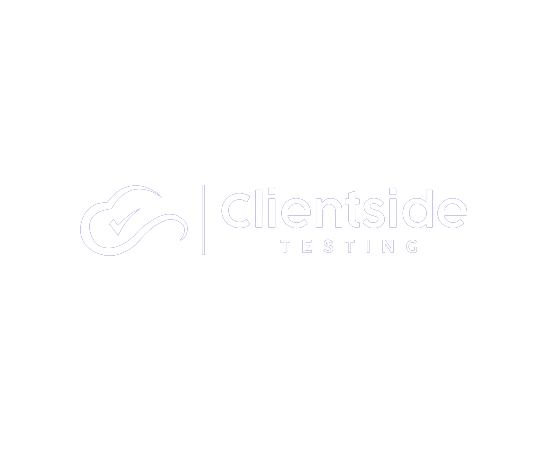The concept of a “skills gap” has become increasingly relevant. The rapid pace of technological advancements, shifts in industry standards, and changes in consumer preferences mean that the skills required to succeed in various professions are constantly evolving. Bridging your skills gap—identifying and addressing the difference between your current skills and those needed for your desired career progression or job role—is essential for staying competitive and achieving professional growth. In this blog, we’ll explore effective strategies for identifying, addressing, and bridging your skills gap, helping you to advance in your career and enhance your employability.
Understanding the Skills Gap
The skills gap refers to the difference between the skills that employees currently possess and the skills that employers need. This gap can exist at various levels, including:
- Industry-Specific Skills: These are specialised skills required for specific industries or roles. For example, the rise of data analytics has created a demand for skills in data interpretation and software tools that weren’t as critical a decade ago.
- Technical Skills: These are practical, job-specific skills such as programming, software proficiency, or machinery operation. As technology evolves, the technical skills needed in many professions change.
- Soft Skills: These include interpersonal skills such as communication, problem-solving, and leadership. While these skills are not industry-specific, they are crucial for success in virtually any role.
- Leadership and Management Skills: As you advance in your career, the need for skills related to team management, strategic thinking, and decision-making becomes more pronounced.
Understanding where your skills currently stand in relation to industry demands is the first step toward addressing your skills gap.
Identifying Your Skills Gap
Identifying your skills gap involves assessing your current skills, understanding industry requirements, and recognising areas where you need improvement. Here’s a structured approach to identify your skills gap:
1. Self-Assessment
Begin by conducting a self-assessment to evaluate your current skills, strengths, and weaknesses.
- List Your Skills: Write down all the skills you currently possess, including both technical and soft skills.
- Evaluate Your Proficiency: Rate your proficiency in each skill, from basic to advanced. This will help you identify areas where you might need further development.
- Review Past Performance: Reflect on past performance reviews, feedback from colleagues, and any professional assessments you’ve received.
2. Research Industry Requirements
Next, research the skills and qualifications required for roles or career paths you are interested in.
- Job Descriptions: Look at job descriptions for roles you aspire to. Pay attention to the skills and qualifications that are frequently mentioned.
- Industry Trends: Stay informed about industry trends and emerging technologies. Understanding these trends can help you anticipate future skill requirements.
- Professional Associations: Consult industry reports, professional associations, and industry experts to get insights into the skills that are becoming increasingly important.
3. Seek Feedback
Get feedback from mentors, colleagues, or supervisors to gain an external perspective on your skills and areas for improvement.
- Mentorship: Discuss your career goals and skills with a mentor who can provide valuable insights and advice.
- 360-Degree Feedback: Consider using 360-degree feedback tools to gather input from various sources, including peers, subordinates, and supervisors.
Strategies for Bridging Your Skills Gap
Once you’ve identified your skills gap, the next step is to develop a plan to address it. Here are some effective strategies for bridging your skills gap:
1. Set Clear Goals
Establish clear, achievable goals for closing your skills gap. These goals should be specific, measurable, attainable, relevant, and time-bound (SMART).
- Define Your Objectives: Outline what you want to achieve and why. For example, “I want to improve my data analysis skills to qualify for a data scientist role within the next six months.”
- Create a Timeline: Set a timeline for achieving your goals. This will help you stay focused and track your progress.
2. Pursue Education and Training
Invest in education and training to acquire the skills you need.
- Formal Education: Consider enrolling in formal education programs such as degrees, diplomas, or certifications that are relevant to your career goals.
- Online Courses: Take advantage of online courses and e-learning platforms that offer flexibility and a wide range of topics. Websites like Coursera, Udemy, and LinkedIn Learning provide numerous courses on various skills.
- Workshops and Seminars: Attend workshops, seminars, and conferences to gain hands-on experience and learn from industry experts.
3. Gain Practical Experience
Practical experience is crucial for developing and applying new skills.
- Internships and Volunteer Work: Look for internships or volunteer opportunities that allow you to practice and enhance your skills in a real-world setting.
- Freelance Projects: Take on freelance or project-based work to gain experience and build your portfolio.
- On-the-Job Learning: Seek opportunities within your current job to take on new responsibilities or projects that align with the skills you want to develop.
4. Network and Collaborate
Networking and collaboration can provide valuable opportunities for skill development and career growth.
- Professional Associations: Join industry-related professional associations and attend networking events to connect with peers and industry leaders.
- Mentorship Programs: Engage in mentorship programs to gain guidance and advice from experienced professionals.
- Collaborative Projects: Participate in collaborative projects or team activities that allow you to learn from others and apply new skills.
5. Stay Updated and Adapt
The skills required in many fields are constantly evolving. Staying updated on industry trends and being adaptable are key to maintaining your skills and relevance.
- Continuous Learning: Commit to lifelong learning and regularly update your skills to keep pace with industry changes.
- Subscribe to Industry News: Follow industry news, blogs, and publications to stay informed about emerging trends and technologies.
- Adapt to Change: Be open to adapting your skills and strategies based on new developments and opportunities.
Overcoming Challenges
Bridging your skills gap can come with its own set of challenges. Here’s how to overcome some common obstacles:
1. Time Constraints
Balancing skill development with work and personal commitments can be challenging.
- Prioritise Learning: Allocate specific times for learning and skill development. Even short, consistent efforts can lead to significant progress.
- Leverage Resources: Use flexible learning resources such as online courses that can be accessed at your convenience.
2. Financial Constraints
Education and training can be expensive, but there are ways to manage costs.
- Seek Scholarships and Grants: Explore scholarships, grants, and financial aid options that may be available for educational programs.
- Utilise Free Resources: Take advantage of free or low-cost learning resources such as online tutorials, webinars, and open educational resources.
3. Lack of Motivation
Staying motivated throughout the process is crucial for success.
- Set Milestones: Break down your goals into smaller milestones and celebrate your achievements along the way.
- Find Support: Surround yourself with supportive individuals who can encourage and motivate you.
Conclusion
Bridging your skills gap is a critical component of professional growth and career advancement. By understanding your current skills, researching industry requirements, and implementing effective strategies, you can address your skills gap and enhance your employability. Remember that skill development is an ongoing process that requires commitment, adaptability, and continuous learning. Whether you’re looking to advance in your current role or transition to a new career, bridging your skills gap will help you stay competitive and achieve your professional goals.
As you work on closing your skills gap, stay focused on your objectives, seek out opportunities for growth, and embrace the challenges and rewards of continuous development. With dedication and perseverance, you’ll be well-equipped to navigate your career path and achieve

